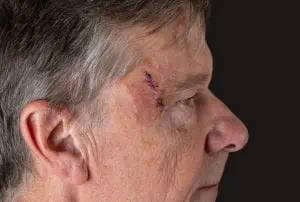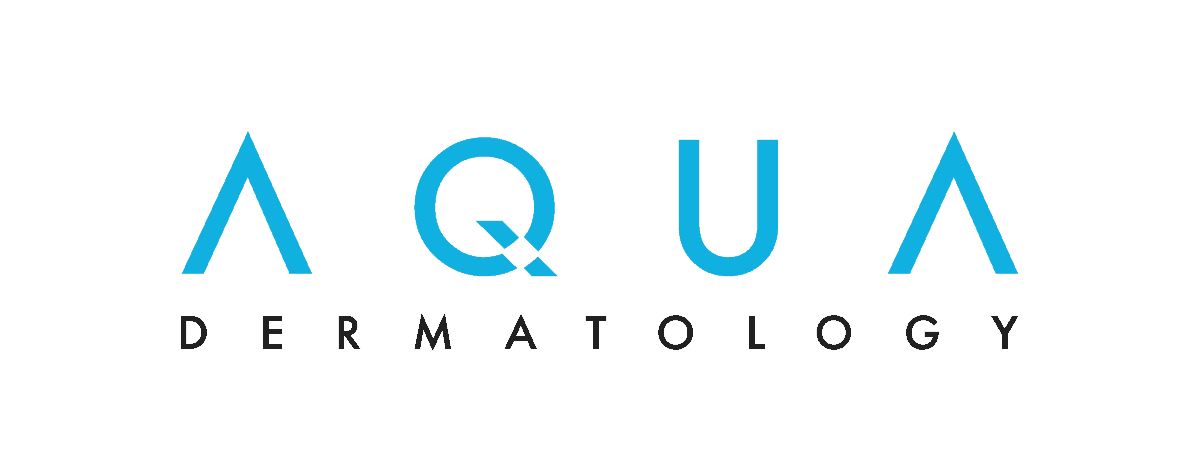 If you’re diagnosed with basal cell carcinoma or squamous cell carcinoma, there’s a good chance your dermatologist will recommend Mohs surgery. In this technique, the surgeon removes cancerous tissue in stages, one layer at a time, until no more cancer remains. Besides offering a significantly higher cure rate than traditional skin cancer surgery, Mohs limits scarring and reduces the likelihood of needing additional treatment.
If you’re diagnosed with basal cell carcinoma or squamous cell carcinoma, there’s a good chance your dermatologist will recommend Mohs surgery. In this technique, the surgeon removes cancerous tissue in stages, one layer at a time, until no more cancer remains. Besides offering a significantly higher cure rate than traditional skin cancer surgery, Mohs limits scarring and reduces the likelihood of needing additional treatment.
Mohs surgery is done in a single visit, and when you leave the dermatologist’s office, you can be confident that your skin cancer has been removed. But what happens after you go home? Here, Dr. Justin Platzer, a board-certified dermatologist and Mohs surgeon at Water’s Edge Dermatology, answers the most frequently asked questions about Mohs surgery recovery, including wound care.
What should I expect after Mohs surgery?
Some post-operative swelling, bruising and minor discomfort is normal and can be managed with an over-the-counter pain reliever such as Tylenol. “I normally don’t prescribe any post-op pain medication,” said Dr. Platzer. These symptoms usually resolve within 48 to 72 hours. Applying ice or a cold compress for 20 minutes every hour can help reduce inflammation and swelling. The cold also makes the nerve endings less sensitive to pain. Depending on the location of the surgery, the sutures (stitches) will be removed in seven to 14 days.
How do I take care of the wound?
Your dermatologist will provide instructions on how to care for the surgical wound. Dr. Platzer advises his patients to leave the original dressing in place for 24 hours and avoid getting it wet. After that, he recommends gently cleansing the area daily with soap and water, applying a small amount of ointment and then covering the wound with a non-stick bandage. “Ointment ensures it stays moist, which helps the wound heal,” said Dr. Platzer.
Due to the low rate of infection after Mohs surgery and the high rate of allergic reactions to antibacterial ointments such as Polysporin, Neosporin or Bacitracin, most dermatologists advise using plain petroleum jelly, such as Vaseline.
Does it help to massage a scar after Mohs surgery?
Massage is an effective way to decrease the buildup of scar tissue and facilitate the healing process. “If the scar tissue is inflamed and a little hard, massage will help settle it down,” said Dr. Platzer. Just be sure to wait until your sutures are removed and any scabs have fallen off by themselves. Pulling off scabs can slow recovery and increase the risk of infection. Usually a few weeks of light massage with your fingertips does the trick, but follow the instructions provided by your dermatologist.
How soon can I exercise after Mohs surgery?
The longer it takes a wound to heal, the greater the chance of a noticeable scar, and resuming physical activity too soon could also slow the healing process. “You don’t want to overdo it because you can pop a suture or stretch the wound site,” said Dr. Platzer. In addition, strenuous activity that increases your heart rate could cause the wound to bleed.
How long you’ll need to wait before returning to your exercise routine depends on the location of the incision. If it’s on the face, in a non-tension-bearing area, a few days to a week should suffice. “If it’s on your back and you want to do heavy lifting, it could be three to four weeks,” said Dr. Platzer. Follow your doctor’s advice.
What else can I do to minimize scarring?
Once new skin has formed, your dermatologist may suggest using a silicone-based scar gel. Research shows these products can help create softer, flatter scars. Dr. Platzer recommends Silagen gel, a 100% silicone gel with SPF 30. Available for purchase only at a doctor’s office, Silagen can be found at any Water’s Edge Dermatology office.
After the sutures are removed, it’s important to use a broad spectrum sunscreen with SPF 30 or higher every day to prevent the new skin from darkening due to ultraviolet light exposure. “It takes six months to a year for the scar to fully heal,” said Dr. Platzer. Sunscreen will also help protect against future skin cancers.
Article Written By: Karyn Repinski is a Brooklyn, NY-based award-winning health and beauty writer.
Medical Review By: Justin Platzer, MD





